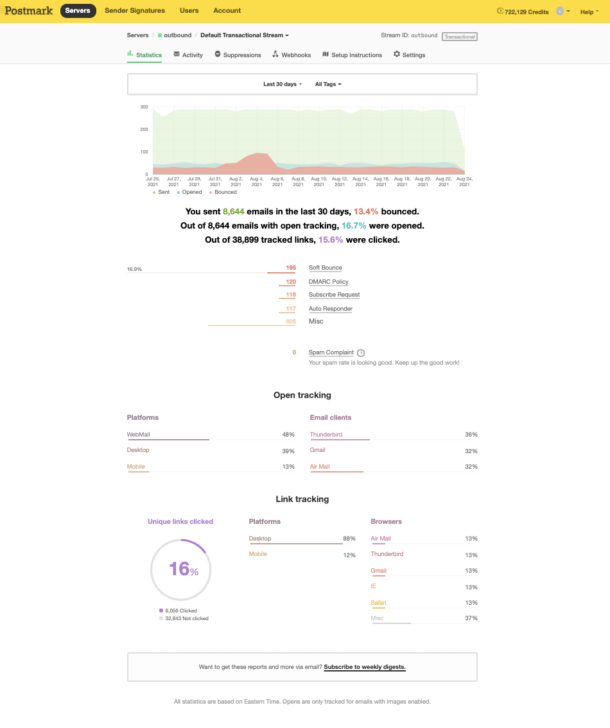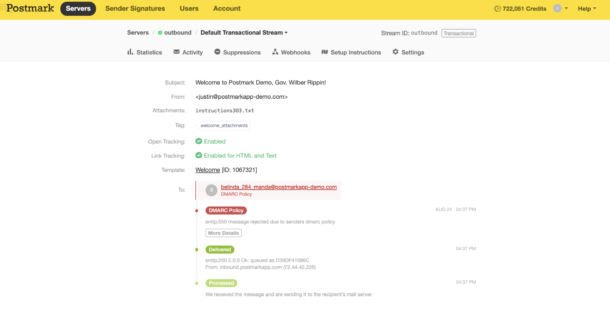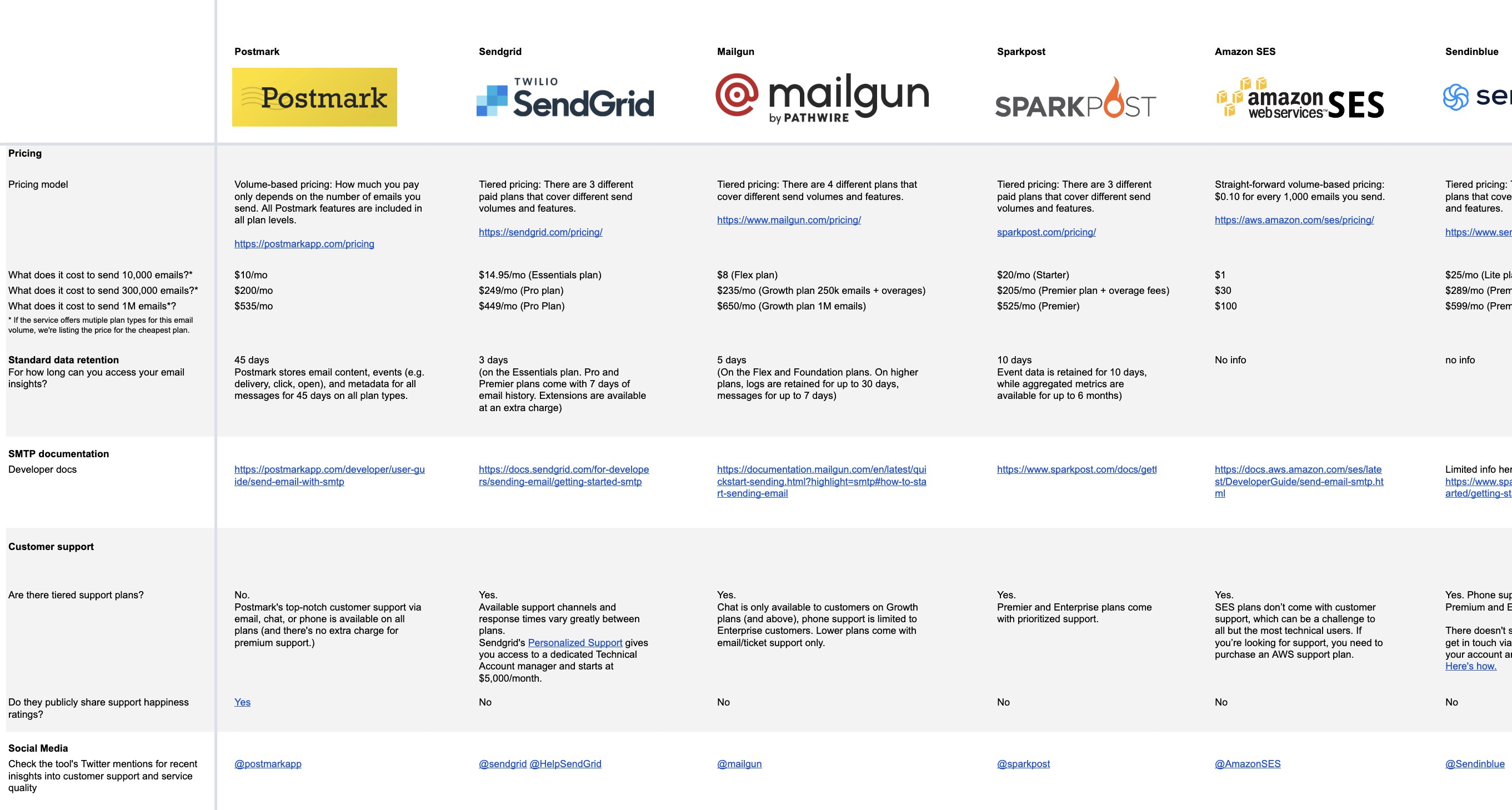How SMTP relay services work (and 5 benefits they offer)
What if we told you that your company’s email deliverability doesn’t depend on you being an all-knowing email expert?
SMTP relay services allow businesses to send bulk emails seamlessly, protect their sender reputations, and avoid being blocklisted—all with the dedicated support of an SMTP service provider. Here’s what you need to know.
What is an SMTP relay? #
An SMTP (Simple Mail Transfer Protocol) relay is a service that allows the transmission of email messages from one mail server to another.
An easy way to understand what an SMTP relay service does is to imagine an Olympic relay race: your email message (a transactional email or promotional/marketing email) is the baton, and the runners are SMTP servers who pass the baton to one another until the final line.
If you don’t want to use an SMTP relay provider to manage your email sending, you can use your own email server—in which case, you’re responsible for setting up and maintaining your email infrastructure, building up a good IP reputation, and handling email bounces and spam complaints.
5 key benefits of using an SMTP relay service #
When you send email, three major factors impact your ability to do so successfully:
- Your SMTP email infrastructure
- Sender reputation
- The content of your messages
You don’t need to be an email expert to comply with the latter—many marketers know to avoid spam trigger words in their subject lines and content and keep their copy typo-free. And we’re pretty sure your team isn’t linking to dubious content or running phishing scams, either.
But those first two factors, email infrastructure and domain and IP reputation, can represent a big headache for senders. You could certainly boot up and run your own SMTP email server, but you’d need to be technically savvy and be used to monitoring, diagnosing, and solving deliverability problems on a regular basis so that you can build a great sender reputation with inbox providers.
Not everybody has the time or experience (or both!) to do it.
If we had to boil it down to one takeaway, businesses use SMTP relay services to achieve better email deliverability without worrying about the technical elements or jeopardizing their ability to send.
Here’s a deeper look at five benefits of SMTP relay services:
1. SMTP relay providers become your sending infrastructure #
Internet service providers (ISPs) look at your domain reputation and IP address reputation to decide whether your emails are routed to your recipients’ inboxes or given a one-way ticket to the spam folder.
A great SMTP relay service provider adds your company into a pool of trustworthy, high-reputation senders and guards the IP reputation with a variety of tools.
If you manage your own SMTP mail server on a shared Virtual Machine (VM), you can’t control the reputation of your sending IP, which means you could be sharing it with someone sending unsolicited messages. This could result in your IP address being blocklisted... and leaving you to claw your way back into your ISP’s good graces.
2. SMTP relays let businesses send large volumes of emails #
Many ISPs and webmail providers place sending limits on emails to ward off spam senders and bad actors. This is because these services are meant for user mail, rather than application email, like order confirmations. This can unnecessarily constrict your business’s ability to nurture, engage, and support your customer base, especially if you’re a high-volume email sender.
The good news: SMTP relay services let you scale and grow your email volume as needed.
3. SMTP relay services give you expert technical support #
Who doesn’t want to work with the best of the best? SMTP mail relay service providers specialize in delivering, monitoring, and improving their email sending practices. You get access to a top-notch email infrastructure as well as an experienced, on-hand support team that can help you with tricky email issues or deliverability challenges.
It’s a different story when you manage your own SMTP services: you’ll need to know how to troubleshoot problems, whether your server goes down one night or legitimate emails are suddenly bouncing.
4. SMTP relay services clue you into deliverability issues and data insights #
One of the things we hear most from clients who switch from their own server to Postmark’s SMTP relay service is that they couldn’t get a clear picture of their deliverability before. For instance, they couldn’t tell how many of their emails were bouncing or why it was happening.
SMTP relay services collect your deliverability data, including emails sent, bounces (and the type of bounce), spam notifications, spam complaints, detailed error codes, and more:

In other words, SMTP services offer value beyond the ability to hit “send:” they deliver important data and insights, so whether your email arrives seamlessly or fails to show up, you’ll know why.
5. SMTP relay services offer time-saving, user-friendly interfaces #
Unlike a self-managed server, most SMTP relay services come with a clean, attractive user interface (UI) out of the box. A better UI makes it easy to find, surface, and understand email information for anyone in your organization. It also cuts down on back-and-forths and exhausting hunts for email info.
For example, let’s say you’re scratching your head over a customer complaining that they didn’t receive an order confirmation. With a clean UI, you could find the email in question a lot quicker and see the bounce code in a clear, visual manner.

How does SMTP relay actually work? #
First, some quick background: Simple Mail Transfer Protocol (SMTP) is the protocol used to send email to your recipient.
Without SMTP, you couldn’t send email messages to anyone outside your domain, which is obviously a problem: more likely than not, your business relies heavily on transactional and bulk emails to interact with your subscribers and customers every day.
When you click ‘send’ on your email message, your email app or client opens an SMTP connection. Your server (also known as the sending mail server or SMTP client) starts talking to your recipient’s SMTP server. They use a variety of SMTP commands, or short phrases, that transfer data and enable authentication at each stage of the sending process.
The SMTP client sends over your email address, the recipient’s email address, and the content of your message. If everything checks out, your emails are sent:

→ For a more detailed breakdown of how SMTP works, common SMTP error codes, and other email protocols, check out our guide: Everything you need to know about SMTP.
What to look for in SMTP relay services #
When you're comparing SMTP relay service providers, you're first and foremost looking for a company with a great reputation, reliable infrastructure, and established track record.
Here are some tips for narrowing down the field:
- Check their documentation to see if it's straightforward and easy to understand their requirements (we think Postmark’s Support Center is a good example of what you should be aiming for).
- Prioritize email providers with excellent support availability and resources. If you have an issue with deliverability, whether it’s one message or 100,000, you want a response and solution as soon as possible.
- Check a very visible media channel like Twitter or Facebook to see what, if anything, current or existing customers are complaining or raving about.

Thank you, Marc!
→ Want to learn more? We wrote a deep dive into the factors to consider when picking an SMTP provider and a side-by-side comparison of the most popular SMTP services.

What if you don’t want to use an SMTP relay service? #
We admit we’re a little biased on this topic because Postmark is an SMTP relay service. But in our experience, there aren’t many downsides to choosing a third-party provider.
As we’ve covered, no sender can get away with a poor IP reputation or faulty email infrastructure. Working with an SMTP provider lets you tap into a vast pool of email sending expertise and support if issues ever crop up. It’s much easier to guarantee uninterrupted email service and know your message will get where it needs to go.
That said, it’s important to acknowledge that an SMTP relay service could be a more costly option than managing your own SMTP server (though the time and effort you have to put into it will, in most cases, offset the savings quite quickly). And you may not need one if you have an email tech expert down the hall or a phone call away.
There are also some more extreme examples where an SMTP relay service may not be the best choice. For instance, huge enterprise companies like Facebook have the internal resources to manage their own mail relay and set up their own internal deliverability team.
On the other side of the spectrum, many small companies think they don’t have a large enough email sending volume to justify the cost of SMTP relay services. But as we pointed out before, the benefits go beyond the number of emails you’re able to send. On the whole, SMTP service providers can offer better server security, higher email delivery rates, clearer information, and much less hassle.
Key takeaways #
What is an SMTP relay? #
An SMTP relay is a service that allows the transmission of email messages from one server to another.
What are the benefits of an SMTP relay service? #
5 key benefits of using an SMTP relay service:
- The provider become your sending infrastructure (so its good reputation becomes yours)
- You can send large volumes of emails (the service helps you scale and grow your email volume as needed)
- Expert technical support (compared to having to figure it out on your own if you manage your own SMTP service)
- You get a clear view into deliverability issues and data insights (the service helps you collect deliverability data)
- Time-saving, user-friendly interfaces (unlike self-managed servers with basic UI)
What should you look for in an SMTP relay service? #
- Great company reputation
- Reliable infrastructure
- An established deliverability track record
- Easy documentation
- Excellent support availability
- Positive public reviews and mention
Go headache-free with Postmark’s SMTP relay service #
When you sign up with Postmark, there’s no warm-up period, provisioning process, or confusing server to configure: we’ve already done the hard work of creating a robust, trustworthy SMTP email infrastructure. Once you create your account, you’re up and running quickly with lightning-fast email delivery and a team of experts—that’s all there is to it.


